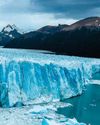TRACKING SEA MONSTERS
How It Works UK
|Issue 206
How a NASA star-mapping tool is being put to a new use - following the largest fish in the sea, whale sharks
It's often said that we know more about what's up in space than what's hidden in our oceans. Staggering, when you remember that the surface of the Earth consists of a little over 70 per cent water. Take the whale shark, for example - on average, they're around nine metres in length, but the biggest known adult was over 12 metres long and weighed roughly the same as a typical fire engine. Known as 'tofu sharks' for their taste and texture, these are giants of the ocean, yet our knowledge of them is still small. However, new insights into these creatures is coming from a surprising source - a NASA algorithm originally used to identify stars photographed by the Hubble Space Telescope.
Whale sharks spend much of their time at great depths in the ocean, away from human eyes. They are highly migratory, move far away from our coasts and can dive thousands of metres per day. It means that research into these creatures is expensive and difficult. With the exception of the 1980s and 1990s, when whale sharks became a target for their flesh and fins, generally they are of no economic value, so little has been invested into finding out more about them. We don't understand how they mate, or where they give birth. All that is known about these sharks, which have a similar life span to humans, is the information that's gathered when they're shallow enough and close enough to our shores for us to see in order to gather data. In the past, tagging them to learn more about whale shark migration and behaviour had been the answer. But it hasn't been successful. In fact, according to Jason Holmberg, a director of the Wild Me conservation project: "Physical tags had a less than one per cent success rate."
यह कहानी How It Works UK के Issue 206 संस्करण से ली गई है।
हजारों चुनिंदा प्रीमियम कहानियों और 10,000 से अधिक पत्रिकाओं और समाचार पत्रों तक पहुंचने के लिए मैगज़्टर गोल्ड की सदस्यता लें।
क्या आप पहले से ही ग्राहक हैं? साइन इन करें
How It Works UK से और कहानियाँ
How It Works UK
20 WEARABLE HEALTH TRACKERS
Whether you strap a wellness coach to your wrist or weave subtle sensors into your clothes, these devices are revolutionising how we track our health
9 mins
Issue 210
How It Works UK
SUPERPOWERED PLANTS
The world of plants is vibrant and diverse, just like this book.
1 min
Issue 210
How It Works UK
SECRET STORIES OF LOST BEASTS
We're all aware of the mighty dinosaurs that once roamed Earth, but there are so many weird and wonderful species that have been lost to time.
1 min
Issue 210

How It Works UK
ALL ABOUT BLIMPS
Is it a bird? Is it a spaceship? No... it's a non-rigid airship
2 mins
Issue 210
How It Works UK
SUPER QUESTERS MISSION: RAINFOREST MAGIC
Join adventurers Leo, Lilli and Bea as they transform into superheroes and journey to the rainforest in the pursuit of knowledge.
1 min
Issue 210

How It Works UK
HOW THE MIGHTY MAMMOTH RULED THE ICE AGE
Meet the prehistoric giants that roamed the Arctic Circle thousands of years ago
4 mins
Issue 210
How It Works UK
Have they found LIFE ON MARS?
Although it's by no means certain, scientists are slowly accumulating evidence that life once existed on the Red Planet
2 mins
Issue 210

How It Works UK
HOW FAST DO GLACIERS MOVE?
The speed at which a glacier flows depends on its mass, the depth and slope of the underlying rock bed and friction.
1 min
Issue 210

How It Works UK
HOW IN-FLIGHT WI-FI WORKS
This technology allows you to scroll to your heart's content while killing time at cruise altitude
3 mins
Issue 210

How It Works UK
HOW WIGWAMS WERE BUILT
Discover the construction and living conditions inside these traditional domed dwellings
1 mins
Issue 210
Listen
Translate
Change font size

